Angela Ackerman's Blog: Writers Helping Writers, page 176
June 27, 2012
Sweeter Than Tea Writing Tips & Giveaway

Click for the recipe!
Hi everyone, I have SUCH a treat today! Some of my very good friends and writers that I greatly admire are releasing a short story collection, Sweeter Than Tea through Belle Books. When I found out I was all, Ahhh! and jumping around and stuff, and then I calmed down enough to ask if they might stop by and share with us a powerful Description Tip.
Many of the authors were able to be here today with Becca and I, and their tips follow. But that's not all. Belle Books is offering up 10 (yes, T-E-N) print copies of this southern-flavored collection for you to WIN. How delicious is that? So read on and check out these excellent tidbits, and leave us a comment if you'd like to be included in the giveaway.
Descriptive Tips To Give Your Writing A Boost
Kathleen Hodges: There's so much we want to tell our readers when we start a book so they understand our characters and their lives that we often fill the early chapters of the story with tons of backstory. After I wrote my first book, filled with purple prose and pages of backstory, I was lucky enough to have an experienced published writer look at it. She pointed to spot around page 62 in Chapter Three, and said, "Here's your beginning." And that started a writing exercise I used with most of my books after that. I would just write to my heart's content, not worrying about anything except building my characters, and the beginning would find me. Then I would take the key elements of those beginning pages and filter them in slowly. Getting that backstory out of my system was essential to knowing my characters, but not necessarily essential for my reader. Visit Kathleen at A Writer's House!
Martina Boone: When creating a setting or a character, put in one main, memorable detail that simultaneously builds-in active interaction opportunities. Incorporate that detail into the scene or story through action. Use it to show emotion. For example, the framed photo that a character smashes can tell us a lot about that character. What was the photo? When was it taken? What does it represent? How is it framed—in gold, in plain, cheap wood? Where was it kept in the room—among a lot of other photos on the mantel, at the back of a collection on the end table, by itself in pride of place? Choosing how you describe something forces you to concentrate on coming up with something meaningful and makes your description further your story as well as paint a visual. Visit Martina at Adventures in YA & Children's Publishing!
Deborah Grace Staley: Trust that you know enough to write well. Don't get me wrong. You have to do the work. Read novels like a writer, finding something in that author's writer's toolbox that you might need in yours. Go to seminars and conferences to learn about the craft from professionals. Or take a class. But at some point, acknowledge that you know something, too. Enough to see you through writing the book. Trust yourself and your instincts. Most of all, trust that when you sit down to write, even if it's an off day and you aren't sure where you're going with a scene, trust that it will come if you just sit and put fingers to keyboard (or pen to paper). Remember, as long as you have something on the page, it can always be fixed. It does not have to be golden. Visit Deborah at her Website!
Susan Sipal: Be precise and be strong! - One main reason why adverbs (and sometimes adjectives) get the bad rap that they do is because their overuse indicates weak description. If you choose a strong enough verb, you usually don't need an adverb to qualify it. And if your nouns and adjectives are precise, your writing won't risk tripping into purple prose. The foundation for choosing the most precise and strongest word is your imagination. You must first visually imagine the character, setting, action in your own mind, in vivid, active, and beyond-the-norm detail before you can convey that intriguing visual to your reader in black and white on paper or screen. This art of crafting engaging description is usually created through the work of multiple revisions. Enjoy! Visit Susan at Harry Potter For Writers!
Tom Honea: The secret, I think, is to know what the rules are and to be secure enough in what you do to stick to what feels right to you. Listen to the critiques of your group, your cohorts, but don't feel that you are obligated to do it their way.
One other suggestion: read out loud what you have written, especially the dialogue. Or better yet, get someone to read it back to you. If it sounds good out loud, it most likely is good. If it is not good, it won't sound worth a damn! Visit Tom on his Website!
Darcy Crowder: Word choice is a key element in writing description. When I’m in the creative stage of writing (as opposed to editing) my best method of creating description is to close my eyes and imagine myself as my character -in the moment. What does she see? What colors, shapes, textures are she experiencing? What sounds? The drum of a steady rain, the soft drone of insects? What smells? Freshly mowed grass, spaghetti cooking on the stove? The trick is to get the words on the page as quickly as possible. But that’s only the beginning. The magic happens in the editing. My best writing tip is to create word lists. Whenever the moment presents itself; a quiet walk alone, a crowded outdoor festival, a boat ride, a rainy day….you get the idea, take out your trusty pen and handy 3 x 5 index card (I carry some in my purse or pocket) and make a word list. Let the experience flow over you and note as much as possible, using the best words you can. Then, going back to that story you’re editing, pull from these lists. Your words will be fresh, first hand and more fully in the moment.Visit Darcy at It's Only A Novel!
Jane Forest: Several of us got to talking about creativity during a quilting retreat I attended this past weekend. I decided that some people make things, and some just . . . don’t. The makers versus the takers. Those of us who create often have a finger in every crafty pie out there. We have whole rooms in our houses devoted to craft. We don’t simply sew or quilt, we write and make ornamental metalwork, we dye fabric and crochet and knit; do photography and woodworking and cooking and grow veggies and flowers—the list is endless.
I also work in a public library. When I'm helping people get their first email address, I chat with them to find a memorable password. “You don't want to use your children or pet’s names, that might be easy for someone to guess,” I’ll say. “Do you have any hobbies?” I’m astonished by the vast number of people that don’t do anything but chat on the phone or watch sports on TV.
So melding together these two perceptions, I've come up with my tip to all those who want to be more creative, skillful writers: Get out there and make things. Be a creator, not a consumer. Watch less television, hang up the phone. Take some classes and stretch your brains. The more you experience, the more things you discover, the better you will be able to describe them knowledgeably in your books. You never know when some skill you've learned will useful to one of your characters—and having done it yourself, your descriptive writing will have a recognizable bite of reality. Visit Jane at Forest Jane's Designs!
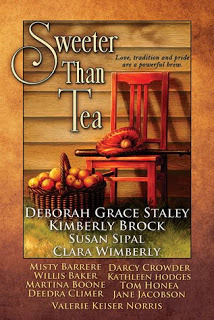 SWEETER THAN TEA: Family dramas, comic mishaps, sentimental remembrances and poignant choices illuminate these thirteen stories by new and established authors. There’s something for every reader: The gritty realism of a hunt for wild boars, the gentle grieving for a home now filled only with memories, the funny battle between a woman and her recipe for deviled eggs, and much more.
SWEETER THAN TEA: Family dramas, comic mishaps, sentimental remembrances and poignant choices illuminate these thirteen stories by new and established authors. There’s something for every reader: The gritty realism of a hunt for wild boars, the gentle grieving for a home now filled only with memories, the funny battle between a woman and her recipe for deviled eggs, and much more.Come sit a spell on the front porch. Prop your feet up, sip a cold glass of sweet iced tea, and lose yourself in a way of life that’s as irresistible as pecan pie and as unforgettable as a chilled slice of watermelon on a hot summer day. Welcome to a place that exists between the pages of How It Was and How It Might Have Been—just a little bit south of the long path home.
Seriously, doesn't this sound like the type of book you want to read this summer? I am a sucker for Southern Stories, and very excited to read this one. Make sure to leave a comment for a chance to win, and if you like, add it to your Goodreads as a backup!
 ***ALSO, Becca, my partner in mayhem, is at Courage 2 Create, a Write To Done's Best 10 Blogs for Writers winner. She's doling out Research Tips for All Writers so please stop in and check it out!***
***ALSO, Becca, my partner in mayhem, is at Courage 2 Create, a Write To Done's Best 10 Blogs for Writers winner. She's doling out Research Tips for All Writers so please stop in and check it out!*** 
Published on June 27, 2012 03:29
June 25, 2012
A Series of Visits
Angela and I are blessed in so many ways. One of the best parts of launching our book has been getting to know so many of our followers and their blogs. Today, I'd like to introduce you to a few of these awesome folks who've allowed either Angela or me or The Emotion Thesaurus to visit their sites. Now, when you hear the word 'visitor', I know it can conjure up a number of startling images.
Some people think of this:
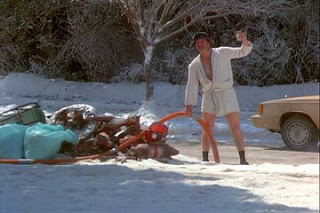
If you're old enough, you might worry about this:

But this is more what we had in mind:
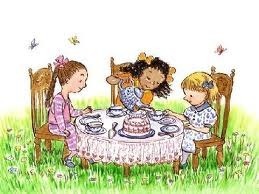
So if you have time this weekend, please stop by, meet some new friends, and say hello.
Dianne Salerni at In High Spirits shares some results after using The Emotion Thesaurus with her fifth grade writing class
Top 5 Books I Wish I'd Written Myself at Donna's Bites
An interview at Nancy Sander's Blogzone
Top 5 Tips for Fledgling Writers at The Thinker
An interview about The Emotion Thesaurus' Publication Process at Kitty's Inner Thoughts


Some people think of this:

If you're old enough, you might worry about this:

But this is more what we had in mind:

So if you have time this weekend, please stop by, meet some new friends, and say hello.
Dianne Salerni at In High Spirits shares some results after using The Emotion Thesaurus with her fifth grade writing class
Top 5 Books I Wish I'd Written Myself at Donna's Bites
An interview at Nancy Sander's Blogzone
Top 5 Tips for Fledgling Writers at The Thinker
An interview about The Emotion Thesaurus' Publication Process at Kitty's Inner Thoughts

Published on June 25, 2012 04:31
June 23, 2012
Character Entry Trait: Calm

Definition : free from agitation or disturbance; composed; level-headed
Causes : an easy-going nature, a boring personality, lack of imagination, practicality (why get upset if I can't do anything about it?), an upbringing that focused on composure and emotional temperance, a desire for peace
Characters in Literature: Legolas, Spock, Nick Andros (The Stand), Yoda
Positives : Calm people don't rock the boat. They're dependable, do what they say they'll do, and can be relied upon to react predictably in any situation. As such, they act as stabilizers in a high drama cast of characters. They don't allow emotion to sway them and can be depended upon to hold fast to the basics and make solid decisions. Calm characters can be the glue that keeps a group from falling apart.
Negatives : Because of their consistency and reliability, calm characters are usually pretty boring. Because they always seem to do the right thing, they can be seen as cardboard, unrealistic, and forgettable.
Common Portrayals: parents and grandparents, religious figures, mentors, immortals
Cliches to Avoid: the wise mentor who shows no emotion, no matter how desperate the scenario; the martyr who calmly and serenely faces his own death; the calm character who never makes a mistake
Twists on the Traditional Calm Character:
Emotionally, your character might be even-keeled, but he can be weak in other areas. Give him an achilles heel or crazy quirk to make him more interesting.
Because calm character are somewhat boring, they aren't usually cast as heroes. But what if calmness is a fault that has to be overcome? What if the calm demeanor is a deep-seated survival technique that must be broken down so the hero can experience real emotion?
Conflicting Characteristics to Make your Calm Character Unique or More Interesting: adventurous, loyal, glamorous, rude, messy, gluttonous, pessimistic

Published on June 23, 2012 01:33
June 21, 2012
Blog Takeover: Janice Hardy On Style

I'm swapping blogs today with the oh-so-awesome Janice Hardy, author of the imaginative Healing Wars Trilogy & Writing Mastermind of The Other Side Of The Story. Janice is one of the most knowledgeable writers I know, and her MG series is among my favorites. It's a pleasure to hand her the keys and duck out...if you like, after you finishing reading her wisdom today, maybe you'll follow me to Janice's secret lair where I divulge (are you ready for this?) The Key To Success. And now over to Janice...
Are You Just Making Lists? Smoothing the Flow of Your Prose
One pitfall of a first person point of view is that you sometimes end up with a lot of sentences in a row starting with I. This holds true for third person as well, but it seems a bit more noticeable in first. (Maybe because it makes the narrator feel self-centered and egotistical). But the "list-like paragraph" can occur in a variety of ways, and they all have the same result.
A monotonous rhythm that puts readers to sleep.
Good writing has a musical flow, drawing the reader into and through the paragraph and seamlessly handing them off to the next paragraph. Without that flow, you get this:
I ran down to the river to look for my little brother. I found him sitting on a rock, his feet dangling in the water. I yelled for him to come home, but he didn't seem to hear me. I went over and nudged him in the arm. He screamed and fell off the rock into the river. I just laughed.
-Yawn-
The same rhythm, the same pace. The sentences are all roughly the same length as well, adding to that list-like feel. Before you think, "Well, that's just how first person is," let's look at it in third.
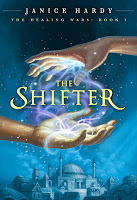 Fred ran down to the river to look for his little brother. He found him sitting on a rock, his feet dangling in the water. Fred yelled for him to come home, but he didn't seem to hear him. Fred went over and nudged him in the arm. He screamed and fell off the rock into the river. Fred just laughed.
Fred ran down to the river to look for his little brother. He found him sitting on a rock, his feet dangling in the water. Fred yelled for him to come home, but he didn't seem to hear him. Fred went over and nudged him in the arm. He screamed and fell off the rock into the river. Fred just laughed.It's just as bad, isn't it? And with both characters being male, you can't even use pronouns all the time to avoid repeating the name.
A little variety makes all the difference. Instead of just using description of action, try mixing in a little internalization, setting, mood, dialog, and reorganizing the sentence structures.
Where was that kid? Fred ran down to the river, scanning the bank where Georgie liked to play. A flash of a red Elmo t-shirt caught his eye and he veered toward it.
"Georgie! Time for dinner."
Georgie didn't turn around; just sat on his rock, head down, his feet dangling in the water.
I can't believe he's gonna make me go down there. Fred slogged through weeds and mud, messing up his brand new sneakers, and nudged Georgie in the arm.
He spun around, screaming, and toppled right off the rock and into the river.
Fred laughed. "Serves you right, brat."
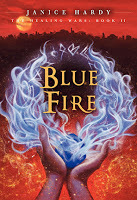 A much more interesting scene now, using the same elements as the original paragraph. Now it's more than a list of actions.
A much more interesting scene now, using the same elements as the original paragraph. Now it's more than a list of actions. But pronouns aren't the only culprits to list-like prose. Similar sentence structure can also give your prose a list feel.
Six men ran across the yard, carrying automatic weapons. They moved silently, their feet light against the stones. At the gate they stopped, waiting on high alert. Their leader disengaged the panel, shutting off the alarm.
Or even...
Six men ran across the yard and ducked behind the wall. They moved silently and their feet made little sound against the stones. At the gate they stopped and waited on high alert. Their leader disengaged the panel and shut off the alarm.
Or another common one...
Carrying automatic weapons, six men ran across the yard. Moving silently, their feet were light against the stones. Still on alert, they stopped at the gate and waited. Carefully, their leader disengaged the panel and shut off the alarm.
See how the same sentence structure flattens out the rhythm?
Red Flags for List-Like Prose
Your ear is probably the best detector on this, especially if you read the work out loud. If it sounds like a list, it probably is.
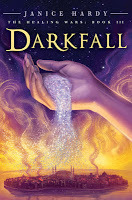 Multiple sentences all starting with pronouns, or all the same pronoun: I-I-I he-he-he, I-he-I-she, it-it-it. One trick here is to do a find and replace for "punctuation, space, pronoun" (. I ? He) and make them bold and red. Several in a row will stand out.
Multiple sentences all starting with pronouns, or all the same pronoun: I-I-I he-he-he, I-he-I-she, it-it-it. One trick here is to do a find and replace for "punctuation, space, pronoun" (. I ? He) and make them bold and red. Several in a row will stand out. Sentences of the same size and structure: These are harder to find, and you really do have to trust your ear on them. But even if they don't all start with a pronoun, sentences with the same structure sound just as list-like. We did this, we did that. He did something and then did something else. To start, they all did something.
You skim it when you read it: If you find yourself skimming over a paragraph because you know what happens and all it does is relay that, there's a decent chance you're just listing the events. Your instincts are probably telling you it's not worth reading, so you don't.
Testing List-Like Prose
Another trick to test if a paragraph is sounding too monotonous, is to actually make a list with the sentences.
Fred ran down to the river to look for his little brother. He found him sitting on a rock, his feet dangling in the water. Fred yelled for him to come home, but he didn't seem to hear him. Fred went over and nudged him in the arm. He screamed and fell off the rock into the river. Fred just laughed.
Reads more like an outline than prose in this format. This also works for similar structure.
This is one of those things that once you're aware of what it sounds like, you'll quickly develop an ear for it and be able to avoid it in your own work. Trust your instincts. If it sounds like a list, it's probably a list.
 Janice's Q for you: Do you check for sentence variety during revisions or does it come naturally as you write?
Janice's Q for you: Do you check for sentence variety during revisions or does it come naturally as you write? Janice Hardy always wondered about the darker side of healing. For her fantasy trilogy THE HEALING WARS, she tapped into her own dark side to create a world where healing was dangerous, and those with the best intentions often made the worst choices. Her books include THE SHIFTER, BLUE FIRE, and DARKFALL. She lives in Georgia with her husband, three cats and one very nervous freshwater eel. You can visit her online at www.janicehardy.com, chat with her about writing on her blog, The Other Side of the Story or find her on Twitter @Janice_Hardy.

Published on June 21, 2012 03:21
June 20, 2012
Villain Myths
Happy Wednesday, people! Normally, Wednesday is hardly a day to celebrate, but today's different for a couple of reasons. First, our Goodreads giveaway is still going strong, so if you're hoping to score a paperback copy of The Emotion Thesaurus (and you live in the US or Canada), head on over and enter to win. And secondly, our own Angela Ackerman is hanging out at the fabulous Query Tracker blog, where she will be spewing writing wisdom by the bucket loads. Today's topic: Three Myths About Villains. And boy does she know what she's talking about--er, I mean, she's...done a lot of research on villains. All second-hand experience, of course...


Published on June 20, 2012 02:00
June 19, 2012
A Worthy Cause, and a Few Words on Good Description
Angela and I were recently contacted by fellow author Kathy Bradey, who's organizing a Writers Auction to support the late Andy Whitfield’s documentary about cancer awareness. Sadly, Andy passed away before his documentary was finished, and Kathy is raising funds to help complete the project. She's lined up a number of published authors who have donated critiques; if you're looking for fresh eyes for your latest book, please consider bidding on one of the crits. All of the funds raised will go towards the effort to finish Andy's project.
****************
 And now, Heather McCorkle's here today (whoop! whoop!) to talk about the importance of good description...
And now, Heather McCorkle's here today (whoop! whoop!) to talk about the importance of good description...
Nothing draws me into a book like a great description. I want to feel what the character feels, taste what they taste, hear what they hear, see what they see, and smell what they smell. That is what truly immerses me and makes me feel like I’m experiencing the story. That is what keeps me coming back to an author for more. Here's a sample of description that engages multiple senses:
"The floors had been dusted with flavored sugar. Specks of it still sparkled in the corners, traces left when our hosts brushed it up before opening the doors to us. Brunt sugar, vanilla cream--both scents hung in the air and I tasted them when I licked my lips." ~from The Springsweet by Saundra Mitchell.
How divinely executed is that? Here's another example of multi-sensory description:
"Neala clamped a hand over her mouth to stifle a cry when her ankle touched Dubh’s side. The pain was so intense that her vision went dark and she leaned forward onto Dubh’s neck. The smell of horse sweat brought her a small measure of comfort, it also helped that he was warm. She suddenly realized she was freezing." ~from To Ride A Puca by Heather McCorkle.
But it's important to remember that good description isn’t just lines and lines of the five senses. It is carefully crafted and balanced so as not to overwhelm the reader, done in a way that flows naturally with the story. Even description has to be integral to the plot line; it has to mean something, serve some kind of purpose. Dialogue and action should be woven into the description, almost like a dance that is carefully balanced.
Some of The Greats write description seamlessly into their novels. A few of my favorites that accomplish this with stunning results are Saundra Mitchell, Eldon Thompson, and Leah Cypess. At times their writing is so smooth and fluid it almost feels lyrical.
For help on fantastic description you need to look no further than the sidebar of this blog and The Emotion Thesaurus. It truly is the bible for writers who wish to take their description to the next level. Because, really, description is all about making your readers feel something.

~Heather McCorkle is the author of the YA urban fantasy novels, The Secret of Spruce Knoll, Channeler’s Choice , the novella connected to the series Born Of Fire (which is now free on Smashwords), and the acclaimed historical fantasy about the last of the druids in ancient Ireland, To Ride A Puca.


****************
 And now, Heather McCorkle's here today (whoop! whoop!) to talk about the importance of good description...
And now, Heather McCorkle's here today (whoop! whoop!) to talk about the importance of good description...Nothing draws me into a book like a great description. I want to feel what the character feels, taste what they taste, hear what they hear, see what they see, and smell what they smell. That is what truly immerses me and makes me feel like I’m experiencing the story. That is what keeps me coming back to an author for more. Here's a sample of description that engages multiple senses:
"The floors had been dusted with flavored sugar. Specks of it still sparkled in the corners, traces left when our hosts brushed it up before opening the doors to us. Brunt sugar, vanilla cream--both scents hung in the air and I tasted them when I licked my lips." ~from The Springsweet by Saundra Mitchell.
How divinely executed is that? Here's another example of multi-sensory description:
"Neala clamped a hand over her mouth to stifle a cry when her ankle touched Dubh’s side. The pain was so intense that her vision went dark and she leaned forward onto Dubh’s neck. The smell of horse sweat brought her a small measure of comfort, it also helped that he was warm. She suddenly realized she was freezing." ~from To Ride A Puca by Heather McCorkle.
But it's important to remember that good description isn’t just lines and lines of the five senses. It is carefully crafted and balanced so as not to overwhelm the reader, done in a way that flows naturally with the story. Even description has to be integral to the plot line; it has to mean something, serve some kind of purpose. Dialogue and action should be woven into the description, almost like a dance that is carefully balanced.
Some of The Greats write description seamlessly into their novels. A few of my favorites that accomplish this with stunning results are Saundra Mitchell, Eldon Thompson, and Leah Cypess. At times their writing is so smooth and fluid it almost feels lyrical.
For help on fantastic description you need to look no further than the sidebar of this blog and The Emotion Thesaurus. It truly is the bible for writers who wish to take their description to the next level. Because, really, description is all about making your readers feel something.

~Heather McCorkle is the author of the YA urban fantasy novels, The Secret of Spruce Knoll, Channeler’s Choice , the novella connected to the series Born Of Fire (which is now free on Smashwords), and the acclaimed historical fantasy about the last of the druids in ancient Ireland, To Ride A Puca.

Published on June 19, 2012 00:00
June 16, 2012
Character Trait Entry: Sensitive
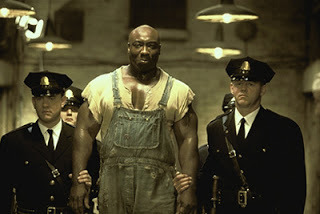 Definition: Responsive to stimuli; strongly susceptible to the attitudes and emotions of others
Definition: Responsive to stimuli; strongly susceptible to the attitudes and emotions of others Causes: Deep sense of empathy; feeling connected to people and the environment; a highly spiritual nature; a past emotional wound that one never recovered from; hormonal imbalance; low self esteem; having a strong affinity (love) for someone or something; a deep self-awareness & understanding of one's emotions
Characters in Literature: Luna Lovegood (Harry Potter); Jonas (The Giver); John Coffey (The Green Mile)
Positives: Sensitive characters, when their emotional armor is removed, are caring and trustworthy and will often do whatever they can to help or make another feel better. Because of their own need for acceptance and love, they are capable of great love and acceptance themselves. Naturally empathetic, Sensitives will often do whatever they can to alleviate the suffering of others, and are capable of a deep level of understanding and connectedness that is rarely found. Sensitives make strong confidants, true friends, and do well in supportive roles where they can advise and be there for the hero.
Negatives: Sensitives can be viewed as weak by other dominant, insensitive types, which often places them in a situation where they are bullied, made fun of or used in some way. The necessity for survival is the adaptation of strong emotional armor that protects the Sensitive from being continually hurt. As a result, anger and resentment can build, creating a wall that few can breach. The Sensitive may also lash out, but almost always regrets it later because of their empathetic qualities, creating confusion within and a drop in self esteem. If a character is too sensitive, this will cause those around them to feel they must handle them with 'kid gloves' to avoid an emotional explosion. Other may view the Sensitive with pity and actively try to create distance from them in order to avoid being caught in the emotional wheel.
Common Portrayals: the geeky, quiet & socially inept male bullied by family members or peers; the sensitive girl with few or no friends; the character who prefers the company of animals/nature over people; the sensitive 'best friend' who pines over a love because they refused to act and declare their feelings
Cliches to Avoid: the 'mama's boy' ridiculed by an overbearing 'manly-man' male role model (a father, a muscle-bound gym teacher, a hard-ass principal); a homosexual male portrayed as emotionally melodramatic to the point of ridiculousness; the Mean Girls circle who pretend to care for a plain-jane sensitive girl to provide them cruel entertainment
Twists on the Traditional Sensitive:
In most fiction, the sensitive character wishes to be different--less sensitive and more able to fit in. Show us a sensitive who is at peace with who they are.
A common theme is characters who oppose a Sensitive view this trait as a weakness. I challenge you to have your character do something so worthy that even the most critical antagonist changes his mind about the sensitive trait!
Put your Sensitive in a role where this trait is not only a huge hindrance, it could negatively impact those he cares for. Let your Sensitive grow by mastering this trait to the point where he can achieve what he must, but still accept who he is.
Conflicting Characteristics to Make your Sensitive Unique or More Interesting: confident; visionary; brave; bossy; impulsive

Published on June 16, 2012 03:15
June 14, 2012
5 Techniques for Adding Subtext to your Story
Just a reminder that our Goodreads giveaway of two print copies of The Emotion Thesaurus will be running through June 30th. Click here for more info.
Today we've invited Ollin Morales to clue us in about subtext--thank goodness, because while I know what it is, I've never understood how to add it to a story without confusing the readers and myself. Ollin's blog is a Top Ten Blogs for Writers winner, and, as I'm sure you'll agree once you've read his post, he knows his stuff.
***********
About 90% of the time, we human beings don’t say what we mean to say. Instead, we speak in subtext. The beauty of subtext is that it makes human interaction fascinating; and, likewise, it’s what will make your story worth reading. If you, as a writer, can fundamentally understand the importance of subtext, I guarantee that you'll see the benefit in adding it to you story.
What Is Subtext? The best way to explain it is with an example:
Boy meets girl.
Boy asks girl: "Do you like Coldplay?"
Boy smiles. Girl frowns.
Girl says: "No, they suck."
Boy asks: "Oh—what music do you like then?"
Boy walks towards girl. Girl steps back.
Girl blows a raspberry.
Girl says: "I hate music."
Boy says: "Oh. So, you wouldn't be interested in going to a free concert?
Boy winks.
Girl takes a moment to think about it. Then, Girl shakes her head.
Boy shakes his head.
Boy says: "Okay, good-bye."
Boy leaves.
Girl takes a huge sigh of relief.
Now, if you take a quick, superficial look at this scene, you might conclude that not much happened in it, right? WRONG. A WHOLE LOT happened. It’s just that it’s hard to catch because it all happened “in between the lines.”
This is how the scene would read if there were NO SUBTEXT, and everyone in the scene was saying exactly what they meant to say:
Boy meets girl.
Boy says: " I think you're cute . "
Boy smiles. Girl frowns.
Girl says: " Thanks ."
Boy asks: " Are you single ?"
Boy walks towards girl. Girl steps back.
Girl blows a raspberry.
Girl says: " Yes. But I'm not interested in you ."
Boy asks: " Can I be your sugar daddy at least?"
Boy winks. Girl takes a moment to think about it. Then, Girl shakes her head.
Boy shakes his head.
Boy says: " Okay, but you're the one who’s missing out ."
Boy leaves.
Girl takes a huge sigh of relief.
Now do you see what really went on in the scene? You probably also recognized an interaction that happens all the time, in real life. Just like in real life, your human characters will never say what they really mean. What they really mean to say will be conveyed through subtext: unspoken words hidden "in between the lines."

DO YOU UNDERSTAND THE WORDS THAT ARE COMIN' OUTTA MY MOUTH?
Now that we've learned what subtext is, here are 5 techniques you can use to add it to your story.
1. Give Your Character An Objective
We all have an objective, whether we realize it or not--“big picture” objectives (buying a house) and “small picture” objectives (going to the bathroom.) In the example above, we can see that the boy's objective was to land a date with the girl, while the girl's objective was to make it clear to the boy that she was not interested in him. Your characters should have something that drives them. The only thing that will drive them is an objective—a goal. Furthermore, having a goal will automatically add subtext to everything they say.
2. Give Your Character An Action
Now that the character has a goal, you have to give them the means by which they can achieve that goal. Try not having your character attempt to achieve his/her goal by deliberately asking for it. Instead, let them use their body language, or their tone of voice, to show what they want. In the example I shared with you, the girl blows a raspberry at the boy to show the boy that she's not interested in him. Blowing a raspberry (although childish) is an action the girl is taking to achieve her objective (making it clear to the boy that she’s not interested in him). Her action also provides a clue to her subtext.
Giving your character an action will help the reader read between the lines of your story—and it will also reveal what the character really wants without you having to explain what the character really wants.
3. Make Your Characters Talk In Gibberish
It might sound strange, but when you replace all your character’s dialogue with gibberish, the subtext is revealed (or at least hinted at). For instance:
Boy meets girl.
Boy asks: "Je janga pota blub?"
Boy smiles. Girl frowns.
Girl says: "Glooby."
Boy asks: "Jin go ploopa?"
Boy walks towards girl. Girl steps back.
Girl blows a raspberry.
Even though we have no idea what they’re saying, it’s pretty clear to us that this girl doesn’t like this boy. How do we know that, if all they did was talk in gibberish? SUBTEXT. If you replace your character’s dialogue with gibberish and it's impossible to know what’s going on, then it probably means you have to develop more subtext. On the other hand, if you did a great job of developing the subtext of the story, then your reader should have a general idea of what’s going on in the scene—even when the characters are talking nonsense.
4. Give Your Character A Secret
When you give a character a secret, it instantly makes them more interesting—and boy will there be subtext galore.
5. Give A Character A Secret About Another Character
What is more tantalizing than a character with a secret? A character who knows another character’s secret. When you put those two characters together in a room it makes for a very fascinating scene—chock full of delicious delicious subtext. Yum!
Good luck!
Hopefully, today, you learned something new: that human beings all talk in subtext and that if you want to create intriguing, believable characters, they'll have to talk in subtext, too. By utilizing these five techniques, you’ll not only vastly improve your ability to create subtext, but you’ll probably never look at human interactions the same way again.
Ollin Morales is a fiction writer, freelance writer, blogger, and ghostwriter. His blog, Courage 2 Create , chronicles his journey as he writes his first fiction novel. His blog offers writing advice as well as strategies to deal with life’s tough challenges. His blog was named one of The Top Ten Blogs for Writers by WriteToDone two years in a row (2011, 2012).

Published on June 14, 2012 00:31
June 10, 2012
The Emotion Thesaurus Sample Entries Are Moving!
 Hi Everyone! I just wanted to stave off any panic in case you notice the Emotion Thesaurus Sample Entries are missing from the sidebar. It's okay--they are safe and sound, just moved to their own page. From now on, all posts and entries to do with The ET will be here: EMOTION THESAURUS.
Hi Everyone! I just wanted to stave off any panic in case you notice the Emotion Thesaurus Sample Entries are missing from the sidebar. It's okay--they are safe and sound, just moved to their own page. From now on, all posts and entries to do with The ET will be here: EMOTION THESAURUS. The reason for this is simple...the sidebar is getting crowded, and we need to free up some room for NEW Descriptive Thesaurus Collections as we roll them out. So, from now on, please visit THE EMOTION THESAURUS page and scroll down to find all your favorite entries :)
Thanks!
Angela & Becca
OH! And today you can find me over at the QQQE blogging about Zombies. SERIOUS discussions going on over there folks, so hop on by!

Published on June 10, 2012 14:54
June 9, 2012
Character Trait Entry: Excitable
Since today's character trait is all about getting excited, it's fitting that I should announce our giveaway of The Emotion Thesaurus at Goodreads. If you haven't gotten your hands on a copy yet and you live in the US or Canada, two print versions are up for grabs. Just follow this link and enter to win before June 30th!
And now for this week's Character Trait Entry...
Excitable!!!
(exclamation points added for emphasis)

Definition: being easily roused into a state of excitement
Causes: curiosity, immaturity, an optimistic outlook, boredom, a need for action or adventure, a desire to perform or prove oneself to others, medication or diet, mental imbalance, a highly intelligence person who is consistently under-stimulated
Characters in Literature: Gilderoy Lockhart (HP and the Chamber of Secrets), Fflewddur Fflam (The Black Cauldron), Tigger
Positives: Excitable characters are passionate. Their zeal is infectious and their exuberance can be the catalyst to spurring fence-sitters into action. Excitables make excellent support characters because they're willing to go along with whatever crazy idea is suggested. Their willingness to do just about anything makes them open-minded and impulsive. If you need someone to do something incredibly brave, dangerous, or stupid, an excitable character will get the job done.
Negatives: Excitables may be passionate, but they rarely think things through. Their lack of common sense and impulsivity often leads to trouble for them and their friends. Because Excitables are delighted by just about everything, they're often viewed by others as childish and simple and aren't taken seriously. They tend to react to opportunities rather than create them for themselves, so it's difficult for an Excitable to be an effective hero.
Common Portrayals: children, sidekicks, crackpots
Clichés to Avoid: the yes man who jumps eagerly into any adventure the hero suggests; the Excitable motivated by curiosity and the thirst for knowledge; the lap-dog-type sidekick who fawns after the hero with no discernible thoughts of his own
Twists on the Traditional Excitable:
Because these characters are often portrayed as mindless followers, give your Excitable a brain. Maybe he can see the foolishness or randomness of his actions, but he is compelled by some other reason to always leap without looking
An Excitable hero who doesn't think for himself would make for an interesting journey and a story rife with trouble
An Excitable mentor would also create some serious conflict for the hero
Conflicting Characteristics to Make your Excitable Unique or More Interesting: timid, rational, cruel, serious, responsible, obedient
*****
And speaking of being excited, I'm totally chuffed to be interviewed today at Miriam Forster's blog, which might have one of the coolest blog names ever. I'd tell you what it is, but what's the fun in that??

And now for this week's Character Trait Entry...
Excitable!!!
(exclamation points added for emphasis)

Definition: being easily roused into a state of excitement
Causes: curiosity, immaturity, an optimistic outlook, boredom, a need for action or adventure, a desire to perform or prove oneself to others, medication or diet, mental imbalance, a highly intelligence person who is consistently under-stimulated
Characters in Literature: Gilderoy Lockhart (HP and the Chamber of Secrets), Fflewddur Fflam (The Black Cauldron), Tigger
Positives: Excitable characters are passionate. Their zeal is infectious and their exuberance can be the catalyst to spurring fence-sitters into action. Excitables make excellent support characters because they're willing to go along with whatever crazy idea is suggested. Their willingness to do just about anything makes them open-minded and impulsive. If you need someone to do something incredibly brave, dangerous, or stupid, an excitable character will get the job done.
Negatives: Excitables may be passionate, but they rarely think things through. Their lack of common sense and impulsivity often leads to trouble for them and their friends. Because Excitables are delighted by just about everything, they're often viewed by others as childish and simple and aren't taken seriously. They tend to react to opportunities rather than create them for themselves, so it's difficult for an Excitable to be an effective hero.
Common Portrayals: children, sidekicks, crackpots
Clichés to Avoid: the yes man who jumps eagerly into any adventure the hero suggests; the Excitable motivated by curiosity and the thirst for knowledge; the lap-dog-type sidekick who fawns after the hero with no discernible thoughts of his own
Twists on the Traditional Excitable:
Because these characters are often portrayed as mindless followers, give your Excitable a brain. Maybe he can see the foolishness or randomness of his actions, but he is compelled by some other reason to always leap without looking
An Excitable hero who doesn't think for himself would make for an interesting journey and a story rife with trouble
An Excitable mentor would also create some serious conflict for the hero
Conflicting Characteristics to Make your Excitable Unique or More Interesting: timid, rational, cruel, serious, responsible, obedient
*****
And speaking of being excited, I'm totally chuffed to be interviewed today at Miriam Forster's blog, which might have one of the coolest blog names ever. I'd tell you what it is, but what's the fun in that??

Published on June 09, 2012 07:44
Writers Helping Writers
A place for writers to find support, helpful articles on writing craft, and an array of unique (and free!) writing tools you can't find elsewhere. We are known far and wide for our "Descriptive Thesau
A place for writers to find support, helpful articles on writing craft, and an array of unique (and free!) writing tools you can't find elsewhere. We are known far and wide for our "Descriptive Thesaurus Collections" which help authors create vivid imagery and sensory detail for their Settings, Characters (physical descriptions, emotions, skills & talents, etc.), Symbolism, Weather, and a whole bunch more. Stop in and say hello! :) http://writershelpingwriters.net/
...more
- Angela Ackerman's profile
- 1017 followers



